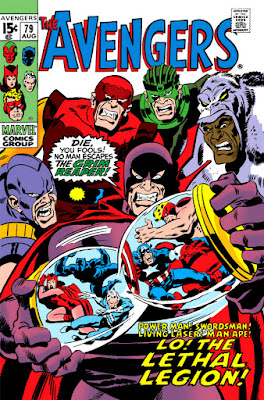When it comes to design and engineering, few would argue that
Tony Stark has made his mark in the field and then some, with the Iron Man armor being perhaps his crowning achievement in terms of making a noteworthy contribution to the world. Yet looking back at what such an impressive suit of armor has allowed its wearer to accomplish and achieve, Stark himself has all too often found himself to be vulnerable to its flaws and, for a time, a prisoner of its principal reason to exist: to keep his injured heart from failing. Those concerns arguably stem from a central and ever-present problem with the armor that Stark has never been able to do more than address as the need arose. Put simply:
How to keep his armor's power levels from being depleted to the point where his heart is put at risk?

From day one, that has been the suit's handicap, and, by extension, Stark's--a man who, for a considerable period in his life (and in his comic's life), dealt with
a heart condition which required the wearing of a metal chest plate at all times in order to keep it beating.
* The flip side of that situation, of course, is that this handicap provides this character's tie-in with Marvel's "heroes with problems" theme--continuing to act as Iron Man, even though a moment may come at any time when the suit's power is compromised to such a degree that Stark suffers heart failure.
** Even so, constantly seeing Iron Man fretting about his dwindling power supply during a battle, or scenes of him trying to drag himself to a wall electrical socket to ward off myocardial infarction, tends to wear on a reader.
*While continuing to date beautiful women who apparently had no problem with one of the most eligible bachelors in the country oddly rebuffing attempts to place a soft head or hand against his chest, much less initiating more forward attempts at intimacy. That adds up to a lot of women comparing notes on you around town, Mr. Stark.
**As a number of you might correctly point out, there's really no drama here in that respect. Tony Stark is the book's title character, so we know he'll survive no matter how many times he collapses in agony--good fortune he shares with Aunt May, closely linked to her book's title character who, in his case, keeps his identity secret to avoid triggering a fatal heart attack in his aunt due to the shock of learning of his existence as Spider-Man.
So the question remains: Why is it that Tony Stark, design engineer extraordinaire--knowing the problem, and realizing that it's the one crack in his armor (figuratively speaking) that might one day prove to be fatal--can't plant himself in front of a drafting table and think of a way to have his cake and eat it too? I.e., use the power of Iron Man, yet isolate his heart with a dedicated and shielded power supply that won't be linked to any systems failures he might encounter in battle?
It just so happens that he was able to do exactly that--or, rather, his alternate dimension counterpart did, in
a mid-1977 What If story where the original Avengers had disbanded with the Hulk's departure and Iron Man was forced to battle both the Hulk and the Sub-Mariner alone when the two joined forces. Necessity, it appears, really
is the mother of invention:
But though battling valiantly, the odds against Iron Man were too great, and he was seriously injured at the scene. Unfortunately, he had no way of knowing his new "armored Avengers" (Henry Pym, Janet Van Dyne, and Rick Jones, who had originally turned down his call for aid) would suit up and follow Iron Man to the battle site--and with Iron Man too weak to help with acclimating to the new armor, Giant-Man fell to the Hulk and lay in danger of dying. That is, until the golden Avenger makes the decision to drain his last reserves of power to save him.
But as for
our Iron Man, I thought it might prove interesting to take the first 100 issues of the character's first series (including his
Tales Of Suspense stories) and track the number of instances when Stark was forced or otherwise felt the need to redesign his armored suit in order to resolve certain problems or adapt to a particular set of circumstances. Several of those situations, it goes without saying, were based on his heart condition, which cleared a significant hurdle in 1973 when Stark found his heart had adapted to the synthetic tissue used to repair the organ during his operation in late 1969. Yet that wouldn't be the end of his problems in that regard, as we'll see.






















